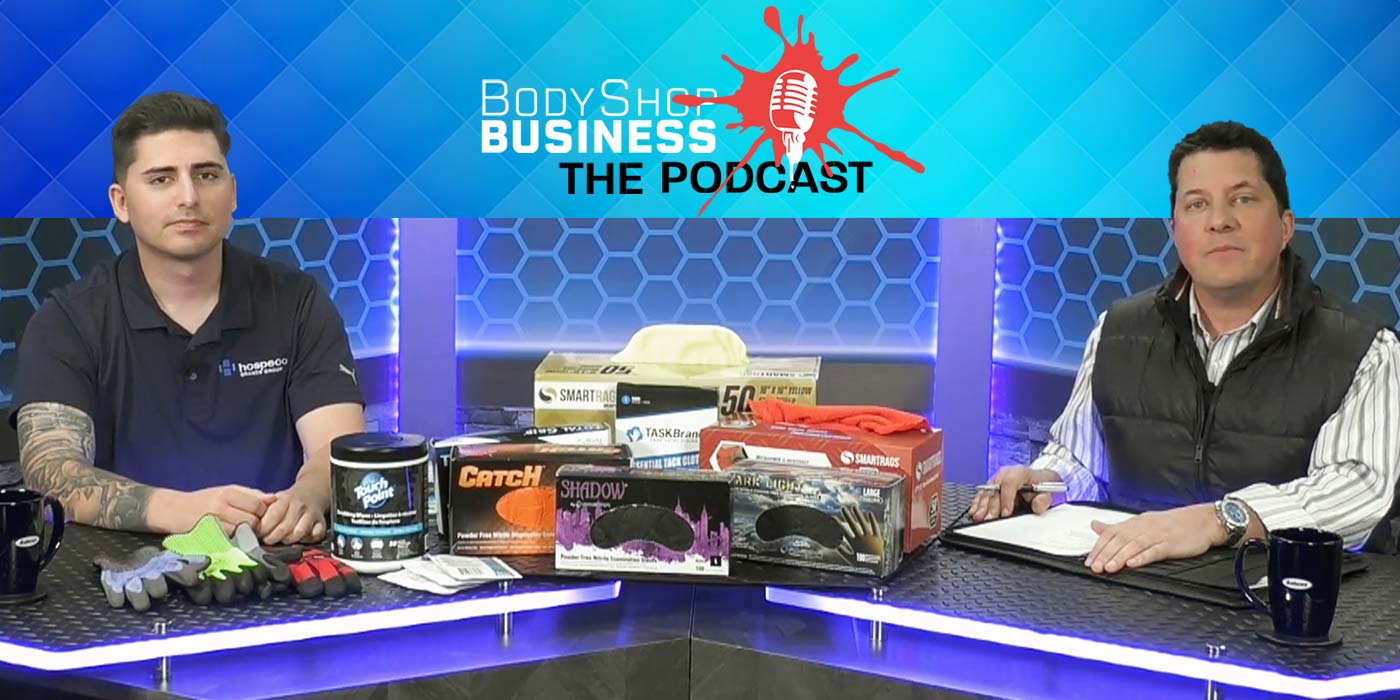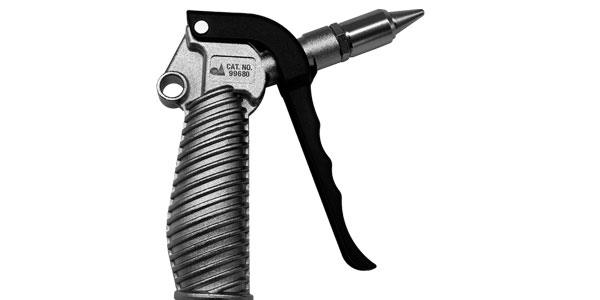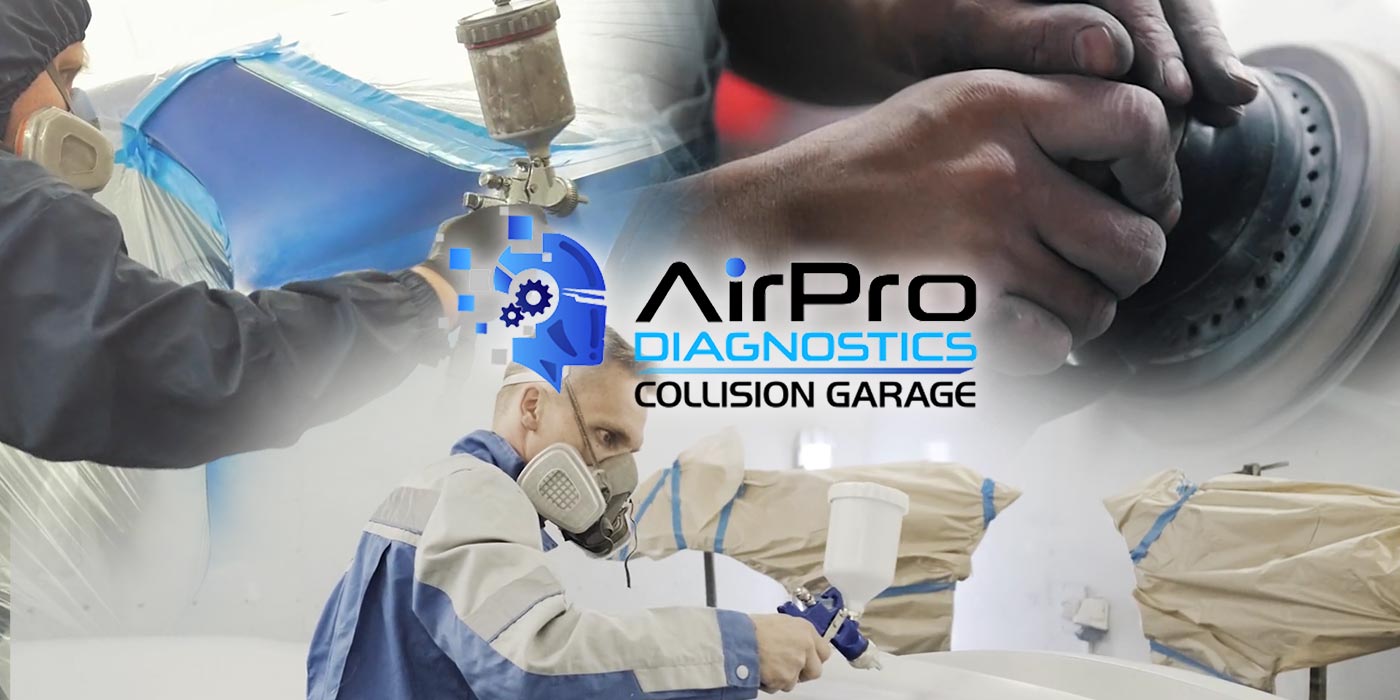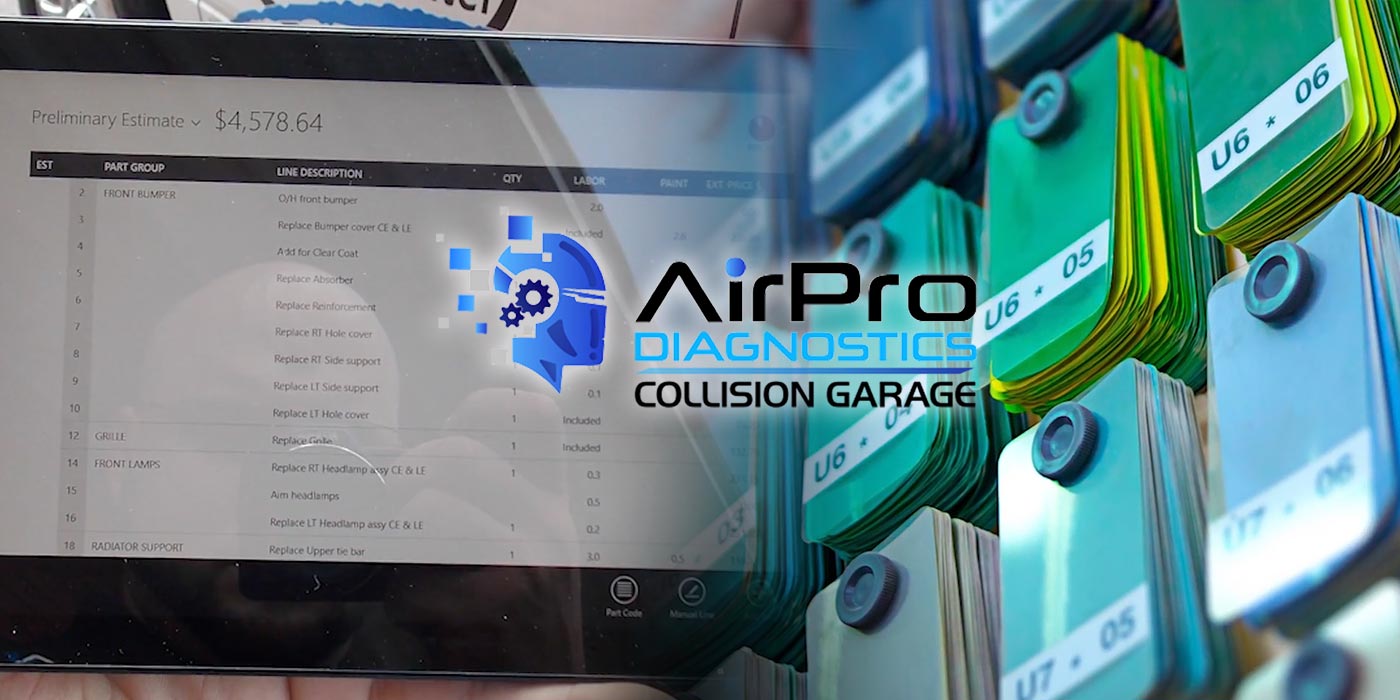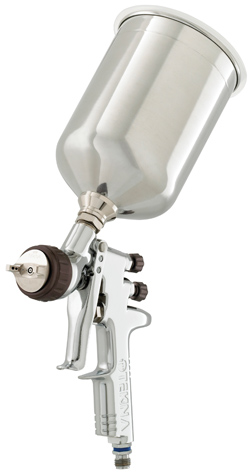
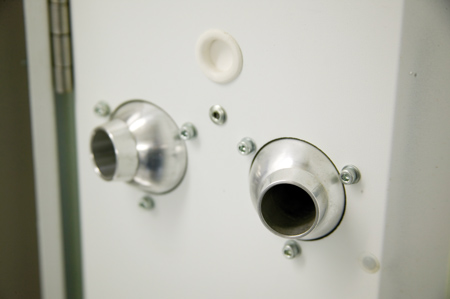
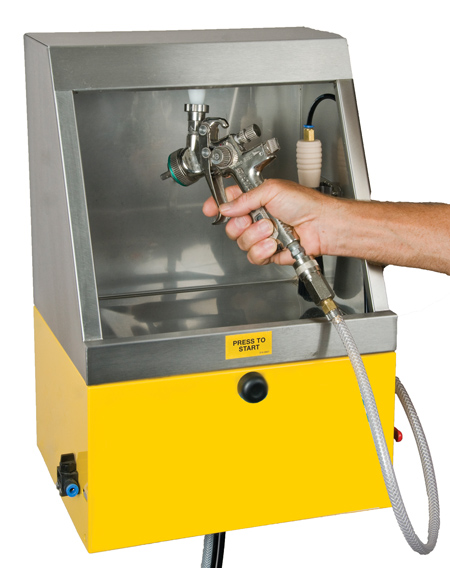 Now that the shops in the South Coast Air Quality Management District (SCAQMD) of Southern California are fully converted to compliant clearcoats and basecoats, turmoil and consternation about the conversion are largely gone. New coatings are working well, and the learning curve was not nearly the hurdle many predicted when Rule 1151 was first amended for the new solvent limits.
Now that the shops in the South Coast Air Quality Management District (SCAQMD) of Southern California are fully converted to compliant clearcoats and basecoats, turmoil and consternation about the conversion are largely gone. New coatings are working well, and the learning curve was not nearly the hurdle many predicted when Rule 1151 was first amended for the new solvent limits.
With an effective date of July 1, 2008 and a drop-dead date of December 31, 2008, the shops in the regulated area are prohibited from using, or even possessing, non-compliant clears and colors. These shops have converted to clearcoats that emit no more than 2.1 lbs. of volatile organic compounds (VOCs) and basecoats that contain no more than 3.5 lbs. – all in an effort to clean up air quality so that citizens don’t have to deal with that unhealthy brown cloud we know as smog.
Now that the pipeline is filled in the SCAQMD, paint manufacturers are actively seeking new shop customers in non-regulated areas of the country. If your shop is considering a switch to waterborne color in an effort to go “green,” there are serious equipment and training issues to consider.
A Change for the Better
Not only do the waterborne basecoats emit less VOCs (which combine with sunlight to form ground level ozone, or smog), they offer significant production advantages. Since most OEM paint lines have employed water for years, the color and effect match with the new refinish paints is terrific. Since they employ tints with high opacity, they hide fast, requiring fewer coats. Also, many paint companies have created new color tools along with their compliant color systems, so color match is much less of a problem than it is with solventborne color systems. Dry times can be significantly less with the water material, too. This is good news but not a free ride: Shops considering the switch as a marketing or production ploy must change their mindsets significantly.
In most Southern California conversions, the paint company and the local jobber performed a shop audit as a first step in the conversion process. And it is a process; it won’t work if your shop just orders the new material and hopes to shoot it productively the next day. Upgrades to the air compressor, spray guns, spraybooth and, most importantly, the painter’s skill set are necessary to make paint with water in it work in an historically solventborne industry.
No Room for Air
In most shops, the air compressor is already overworked and not well maintained. If your shop is one of the few that regularly changes the oil, tightens the drive belts, cleans the intake filter and services the moisture traps, congratulations. If, on the other hand, your shop never looks at the compressor until it quits working, adding all the additional issues water brings to the paint shop will doom your efforts to failure. Among the new issues include:
• Hand-held air venturis consume lots of air volume.
• Moisture in the air line will interfere with dry times.
• Waterborne resins are more susceptible to any contamination from oil vapor or oil aerosol (droplets) than solventborne paints are. Oil and water don’t mix, right?
While moisture in the compressed air has always been a problem, it will be even more so when there’s water already in the paint resin. If your shop compressor never shuts off now, it’s running hot and dumping lots of water vapor into the air lines. Remember that by lowering the head temperature of the compressor pump by 20 degrees F, half the water will turn to liquid and be easily trapped out. Raising the head temperature by 20 degrees F will double the amount of moisture in the lines. A cheap trick is to point a window fan at the running pump to lower the head temperature.
A typical first step in a shop audit is to determine the volume of air required to supply all the air tools and devices in the shop, including the new additional tools needed for waterborne paints. One way to do this is to count the number of technicians and multiply by a set CFM (cubic feet per minute) number. Another way is to total all the volume for every single tool (example: 20 CFM per polisher, 10 CFM per DA, 20 CFM per HVLP spray gun, 15 CFM per venturi). Once the total possible air consumption is determined, divide by three – on the theory that one-third of all the air tools will be in use at any one time. For certain, your paint company representative and jobber salesperson will have a suitable formula to determine the amount of compressed air your shop will need to successfully shoot waterborne.
Since oil vapor is a big problem with waterborne resins, better air line filters are required. Most shops use impact type moisture traps, which will remove almost 100 percent of the liquid water in the compressed air. However, they do nothing for moisture vapor or oil in any form. Activated carbon filters, membrane driers, desiccant beads or some other clean filter system must be used. Remember that with any filter type, you must service it regularly – the days of hanging the filter on the wall and opening the petcock on the bottom every couple of days are over! Clean, moisture-and-oil-free compressed air is very important in making waterborne work well. For many shops, this will involve buying new equipment and, more importantly, committing more strongly to servicing the entire compressed air system on a regular basis.
Point and Shoot
If you aren’t in a regulated area, you aren’t required to use high volume, low pressure (HVLP) spray guns. However, their frugal application of any coating saves money along with the environment. Whether it be HVLP, compliant (65 percent transfer efficiency) or otherwise, a spray gun especially equipped to only applying waterborne basecoats is a necessity. While it’s possible to simply do a thorough cleaning of one of your existing guns and dedicate it to just waterborne, a new spray gun designed specifically for waterborne is probably a good investment.
This new gun must have rust-proof fluid passages, needles and fluid tips. The many spray gun manufacturers I interviewed for this story said the most popular choice by far was stainless steel. Bare aluminum and bare steel will not only corrode in the presence of water, but the new paint resins stick tenaciously to bare metal, even more so than solvent resins do. Existing spray guns with brass or plastic components could be suitable but may not have an appropriate fluid nozzle size.
Waterborne resins need to be applied in thin, even coats to dry quickly and look right. With traditional solventborne resins, the painter could accommodate a change in spray conditions by changing solvent evaporation speeds. Speedy painters would adopt a slow-evaporating solvent to meet their needs when dealing with hot weather and fast booth air speeds. Lethargic painters dealing with cold weather and little air movement simply reduced the paint with fast-evaporating solvents. This is no longer possible with waterborne. Water is a one-speed solvent. There’s no such thing as fast- or slow-evaporating water.
While it’s not possible to make a blanket recommendation about fluid tip and needle sizes, a few generalized rules apply. Since you need thinner coats with the high-hiding material, moving down one fluid tip size is often appropriate. If you were using a 1.3mm or 1.4mm tip and needle with solvent, you might have success with a 1.2mm or 1.3mm tip with waterborne. But a painter would have to consider the relative humidity, booth temperature, air movement, brand of paint and his or her own proclivities and move up or down a nozzle size to accommodate them. Air cap choices are plentiful and should atomize well: Big droplets will make the finish too wet and the water won’t evaporate out easily. A broad, consistent, edge-to-edge pattern is the key.
The gun body itself should also be impenetrable to water. Many gun bodies are designed first to be ergonomically comfortable and then treated, anodized or chrome-plated to be slick, smooth and easy to clean. When shopping for new guns, consider their repairability as well. Are the component parts available individually, or do they have to be bought as a set? Is it easy to gain access to the fluid passages so that thorough, quick cleaning can be accomplished? The cup must also be rustproof and easily cleaned. Plastic, nylon or heavily anodized aluminum are all acceptable choices. As always, ask your jobber to try the gun before buying it. Your paint rep is likely to have a recommended gun brand and fluid set-up; paint something with it.
Waste Not, Want Not
Cleaning the spray gun promptly is a necessity. Not only does the waterborne resin stick tenaciously to the innards of the gun, leaving the gun in the washer can cause rust and corrosion, even on water-specific models. The days of turning on the timer for the gun washer and heading home are over. The gun needs to be run through a cleaning cycle, removed from the hopper and either blown dry or wiped dry immediately – yet another change in procedure that waterborne requires.
Your shop will need a separate gun cleaner and separate waste drum. In some areas, it costs twice as much to dispose of hazardous waterborne waste than it does solvent waste – in part because it can’t be combined on the hauler’s truck and also because it can’t be sold as fuel like solvent can. Not much heat is generated when trying to burn shop waste with water in it! So the goal becomes minimizing the waste you generate. Disposable mixing cups make clean up quick and generate less waste material. The actual fluid chamber on a spray gun is quite small and requires much less cleaning than full-size gun cups do. Make sure you balance the cost of the disposable cups against the labor savings in clean-up time and waste costs. By the way, no new EPA permit is required. Once a shop is permitted to generate hazardous waste, it applies to the waterborne hazardous waste, too.
Retro in the Booth
Since water is content to remain inside the paint film, some method to drive it out quickly is required. Blowing more air across the top of the paint film is the key. Air temperature still plays an important role in fast-drying, good-looking auto finishes. Hot air makes catalysts crosslink faster. It helps drive out the petroleum solvents still contained in waterborne paints and still is crucial to making any 2K clearcoat perform well. You still need good heat. An increasing number of equipment manufacturers make devices designed to both better distribute the heated air inside the spraybooth and whiz air across the basecoat paint film to speed dry times.
Three basic categories of air movement devices are successfully in use in shops across Southern California: air replacement furnaces, air jet cabinets and bladed fans. Each can do the job that hand-held venturis started.
Air replacement furnace. Many existing spraybooths have exhaust fans that pull 10,000 to 12,000 CFM of air out of them every minute. Some method to “replace” that outgoing air is necessary to prevent shop doors from slamming shut when the fan kicks on. The additional air movement required with waterborne finishes can sometimes be accomplished by speeding up the existing air replacement furnace. This is accomplished by changing pulleys on the fan or installing a bigger electric motor. Newer booths may have bigger furnaces from the get-go and will currently move 14,000 to 16,000 CFM, a big help in driving the water out of the finish. Air speed is measured in feet per minute (FPM), and current OSHA regulations require 75 to 100 FPM past the operator. Bigger furnaces and bigger fans can increase the air speed as well as air volume. Remember that actual painting air flow doesn’t change, just the ability to turn up the fan during the flash-off stage.
Air jet cabinets. Several manufacturers offer a method to increase air flow past the painted surface by supplying clean air to wall-mounted cabinets that discharge the air from aimable jets. You can point the jet nozzles toward specific parts of the car, which is handy for hard-to-reach areas like under door handles. Some brands take their incoming air from the already clean air inside the spraybooth, while other brands take filtered air from inside the booth’s intake plenum before they blow it onto the car. Whichever way the air is ducted into the cabinets, the end result is that clean, filtered air is directed onto and around the car. Moving the heated air around inside the booth during the cure cycle is a great way to get the maximum benefit from the furnace-heated air. Some brands claim to be able to lower the discharge temperature from the air replacement furnace by up to 30 degrees because the jets distribute the heated air so well throughout the booth.
Bladed fans. Still other vendors believe the best solution is to install bladed fans inside the spraybooth cabin. Their idea is to increase the air speed of the already heated, filtered, clean air within the booth. Some brands hang their fans below the intake filters much like your ceiling fans at home. Other brands mount the fans in the four corners of the booth. In both cases, they’re increasing the speed of the air, not the volume, in the booth. It’s possible to get the air speed up to a very fast 300 FPM using bladed fans. The goal, as always, is to disturb the liquid skin of the paint film with turbulent air to allow the water to evaporate quickly.
There are two distinct advantages that any spraybooth retrofit equipment has over hand-held venturis: The painter can do something else besides stand and hold the blowers, and the energy cost to run a fan of any kind is much less than the energy cost to compress 40 to 50 CFM of air to 175 PSI to feed the venturis. No matter how you increase the air flow inside the booth, you’ll blow any dirt or dust into the fresh finish. Keeping the booth (one-third of the dirt) clean is paramount. If the painter parks the venturi stand out in the shop and covers it with filler dust, it needs to be carefully blown off before entering the booth. Keeping the painter clean (one-third of the dirt) is easily done with fresh paper or clean nylon spray suits and spray socks to cover their heads. The one-third of the dirt that comes in on the car is best eliminated by a drenching water rinse before it enters the booth. The drip rails and wheel wells carry lots of dirt into the booth, so wash that car off first.
Thar She Blows!
Since blowing air past the painted surface is the desired method to get
water to evaporate from the finish, most shops begin with hand-held air
magnifiers. Remember that water inside the paint film has no urgency to
evaporate into the ambient air. Petroleum solvents are lighter than air
and rush to leave the paint film and rise into the air; not so with
water. On humid days with little air movement, the water is perfectly
content to remain inside the paint film. Blowing air past the surface
and disrupting the top of the film is how you get production speed –
exactly the same way you dry your hands in the public restroom with air
blowers.
These devices all work on the same principle: some volume of compressed
air is blown into the handle. Inside the venturi cone, this air flow
causes more air to be pulled into the rear of the cone from the
surrounding atmosphere. The volume from the compressor is “magnified”
by some factor with the additional ambient air. The volume of air
consumed varies greatly from one brand to the next. In my research, I
found venturis that used as little as 8 CFM and as many as 25 CFM. This
is aeronautical engineering in its truest form. A cheap, imported
knock-off device may be a false economy. While inexpensive to acquire,
it may consume three or four times as much compressed air as another
better-designed unit does. Too much air moving past the finish can
cause it to skim over and trap water in the film as well.
Most brands also offer a stand that will hold two or three venturis at
once. If your brand uses 20 CFM per unit and you run three at one time,
you’ll consume 60 cubic feet of compressed air – a 15-horsepower
compressor all by itself. If your shop is borderline on air capacity,
you may be able to bridge the gap with your existing compressor by
adding another storage tank. While using the same pump, another 80
gallons of air ready to go might get you over the hump. After all, the
blowers don’t need to run for a long time, only minutes instead of
hours. Dry, oil-free air is important at this stage, too. While
spraying oil vapor into the paint film was bad, so is blowing oil-laden
air onto fresh paint. Acquire a good filter and maintain it carefully.
What’s Your Style?
Take the class at the paint company training center. This is the most important change in mindset for any shop considering a switch to waterborne. The water material doesn’t shoot like solvent finishes. The margin for painter preference is much smaller. Since you can’t change solvent speed to accommodate your painting style, you must change your style to the one recommended by the paint company. Go and learn how – it’s not hard. Just ask all those SCAQMD shops that are now productively using compliant basecoats.
Changing your spray technique slightly and following the directions to the letter can allow you, too, to join the waterborne revolution. The benefits are nice, clean color effects; ease of blending into the factory finish; using less material and faster dry times. Plus the bump your shop can get by being the first environmentally concerned kid in your neighborhood.
A final word on safety: There is still solvent in waterborne paint. It also contains sophisticated resins that are hazardous to the painter’s health. The mandated coatings are better for the environment but still bad for the painter. Use positive pressure air supplied respirators and wear full cover suits and protective gloves. Live to paint another day.
Writer Mark Clark, owner of Professional PBE Systems in Waterloo, Iowa, is a well-known industry speaker and consultant. He is celebrating his 21st year as a contributing editor to BodyShop Business.










